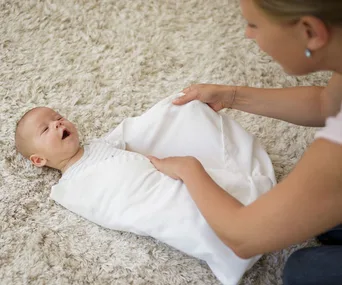Your baby’s sleep, or lack thereof, can be one of the most challenging aspects of parenthood.
According to research commissioned by mycar, a majority (96 per cent) of Australian parents are driving for up to an hour, or 30 km per week (71 per cent), in an effort to settle their tiny tots, totalling up to 1,500 km each year, which is the equivalent of driving approximately from Sydney to Adelaide.
Infant Sleep Consultant Jo Ryan says driving is an effective method of getting babies to sleep, especially when parents don’t know what else to do.
“For many caregivers, sleep-related issues are among the biggest daily challenges during the baby and toddler years,” she says.
“Every baby is different, but driving can mimic some of the characteristics of being in the womb, which includes constant, gentle, rocking motions and a muffled white noise sound. It’s also the light sway and low-level movement that has a really calming effect on babies.”

Lydia and her daughter, Lola are one of the many parents relying on the “driving to sleep” method.
(Credit: Supplied)As a result of the research findings, mycar has launched Lullaby Ready, a free inspection service with advice to ensure your car is running as smoothly as possible.
Sydney-based parents Lydia and Mario Gonzalez are facing sleep issues with their 10-month-old baby Lola, and admit they do resort to driving her to sleep.
“Like many parents, we have had many issues with Lola sleeping and have tried just about everything, from dream feeding, driving in circles and even playing white noise on the radio,” said Mario.
Following a car inspection and logbook service, the parents were thrilled when little Lola was asleep in under four minutes.

Sleep-related issues are among the biggest daily challenges during the baby and toddler years.
(Credit: Getty Images)While driving bub to sleep is an effective method, sleep consultant Jo Ryan advises parents to arm themselves with knowledge on how much sleep babies need according to their age.
“Babies can wind themselves up when they are overtired and it can be difficult to settle them to sleep,” she explains.
“My advice to parents would be to follow a sleep routine with their baby and make sure their room is conducive to sleep – make it dark, play white noise, ensure they have food in their tummy and wrap them to mimic the tight feeling in the womb.”


.png?resize=380%2C285)
